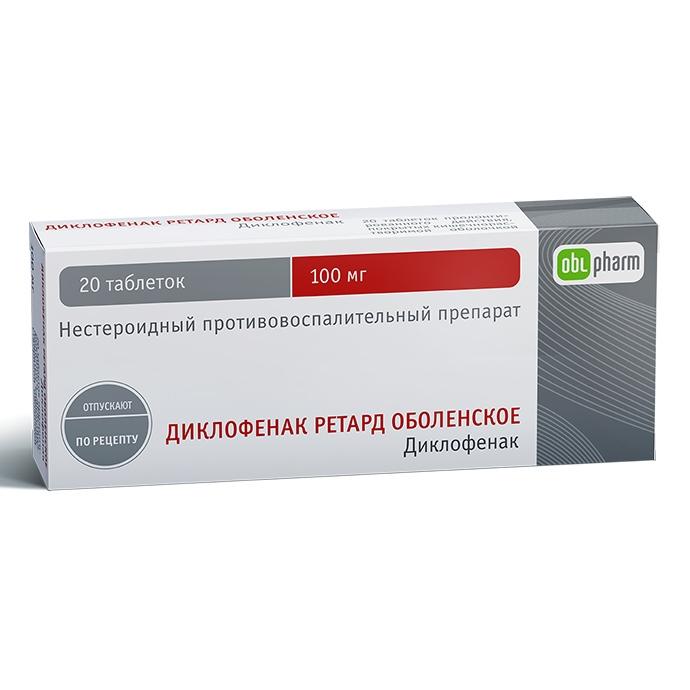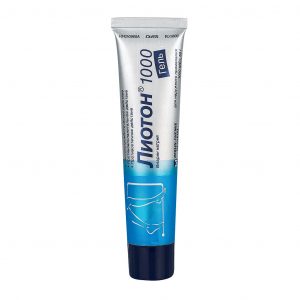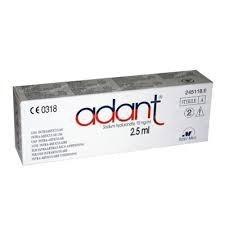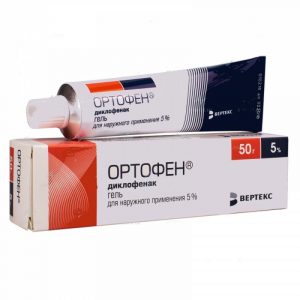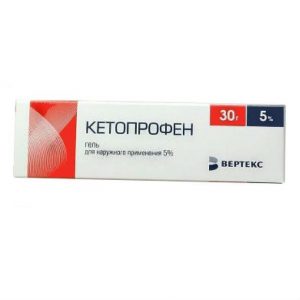Description
Release form
Sustained-release tablets.
Packing
20 pcs.
Pharmacological action
Diclofenac is a non-steroidal anti-inflammatory drug (NSAID). It has anti-inflammatory, analgesic and antipyretic effects. It inhibits the COX enzyme in the cascade of arachidonic acid metabolism and disrupts the biosynthesis of prostaglandins.
Contraindications
– pathological changes in the blood picture of unknown origin
– peptic ulcer of the stomach and duodenum
– destructive inflammatory bowel disease in the acute phase
– pregnancy
– lactation 12 years (intramuscular administration)
– children under 6 years of age (tablets)
– hypersensitivity to acetylsalicylic acid or other NSAIDs (including the aspirin triad)
– increased sensitivity Nost to diclofenac and other ingredients
The drug Diclofenac is possible only under the strict supervision of a physician after careful evaluation of the benefit / risk for the following conditions: congenital hematopoiesis (induced by porphyria) systemic lupus erythematosus and other systemic diseases of the connective tissue, complaints of gastrointestinal function, or with suspected gastric or duodenal ulcer, as well as with erosive and ulcerative lesions (ulcerative colitis, Crohn’s disease ) in patients with previous kidney disease and / or severe hepatic impairment in severe arterial hypertension and / or heart failure in senile patients Dhu after surgery.
With great care and only under the direct supervision of a doctor, Diclofenac can be used in patients with bronchial asthma, allergic rhinitis, polyps of the nasal mucosa, as well as in chronic obstructive airways diseases and chronic respiratory infections due to the risk of an asthma attack, Quincke’s edema or urticaria.
Use during pregnancy and lactation
Diclofenac should not be taken during pregnancy, it is prescribed only in urgent cases. It is excreted in breast milk, therefore, should not be taken during breastfeeding.
Special instructions
Use extreme caution in patients with severe renal, hepatic, and heart failure. Long-term use of diclofenac sodium can cause disorders of the kidney, liver and gastrointestinal tract. Patients in whom, during the use of diclofenac sodium, impairment of liver function is observed, or in which an increase in the activity of liver enzymes is recorded, should stop using the drug.
Patients should take diclofenac after meals to avoid irritation in the gastrointestinal tract.
The use of diclofenac sodium requires caution when driving a car and working with machinery because of the effect it has on the central nervous system.
Composition
1 tablet contains 100 mg diclofenac sodium.
Excipients: lactose monohydrate, hydrogenated vegetable oil, povidone K30, magnesium stearate, talc.
Dosage and administration
Adults are recommended to take from 50 to 150 mg of diclofenac per day, divided into 2-3 separate doses.
In the absence of other prescriptions, it is recommended to take 100-150 mg per day as initial therapy, and with long-term therapy – 75-100 mg divided into 2-3 separate doses.
For children over the age of 6, diclofenac is prescribed at a dose of 2 mg / kg body weight, and the daily dose is also divided into several doses.
Side effects
Side effects depend on the individual sensitivity, the size of the dose used and the duration of treatment.
From the digestive system: nausea, vomiting, epigastric pain, anorexia, flatulence, constipation, gastritis up to erosive with bleeding, increased transaminase activity, drug hepatitis, pancreatitis.
Urinary system: interstitial nephritis.
From the side of the central nervous system: headache, dizziness, disorientation, agitation, insomnia, irritability, fatigue, aseptic meningitis.
From the respiratory system: bronchospasm.
From the hemopoietic system: anemia, thrombocytopenia, leukopenia, agranulocytosis.
Dermatological reactions: exanthema, erythema, eczema, hyperemia, erythroderma, photosensitivity.
Allergic reactions: erythema multiforme, Lyell’s syndrome, Stevens-Johnson syndrome, anaphylactic reactions, including shock.
Local reactions: burning, formation of infiltrate, adipose tissue necrosis are possible at the injection site.
Other: fluid retention, edema, increased blood pressure.
Drug interaction
With the simultaneous use of the drug Diclofenac with digoxin, phenytoin or lithium drugs, it is possible to increase the plasma concentrations of these drugs with diuretics and antihypertensive agents – it is possible to decrease the effect of these drugs with potassium-sparing diuretics – hyperkalemia with acetisalicylic acid may develop in blood plasma and an increased risk of side effects.
Diclofenac may enhance the toxic effects of cyclosporine on the kidneys.
Diclofenk may cause hypo- or hyperglycemia, therefore, with simultaneous use with hypoglycemic agents, control of the concentration of glucose in the blood is required.
When methotrexate is used within 24 hours before or after taking Diclofenac, an increase in the concentration of methotrexate and an increase in its toxic effect are possible.
With simultaneous use with anticoagulants, regular monitoring of blood coagulation is necessary.
Overdose
In acute poisoning with Diclofenac, treatment consists mainly of supportive and symptomatic measures. Apply gastric lavage to reduce suction.
Storage conditions
Store in a dry, dark place at a temperature not exceeding 25 C.
Shelf life
3 years.
Active ingredient
Diclofenac
Pharmacy conditions
prescription
Dosage form
tablets prolong.
Possible product names
DICLOFENAC RETARD OBOLENSKY 0,1 N20 TABLET P / О
DICLOFENAC RETARD OBOLENSKY 0,1 N20 TABLE PROLET P / O
DIKLOFLENO RLENOBLENO 0,1 RELOFFLENO RENOFF RELOFFLENO 0,1 RELOFFLENOFF RELOFFLENO 0,1 RELOFFLENOFF RELOFFLENOFF RELOFFLENOFF 100 RL. .prolong.deist. cover intestinal tract.X20 (R)
Diclofenac retard Obolensk tab prolonged p / o intestinal solution 100mg N20
Obolensky AF Russian
